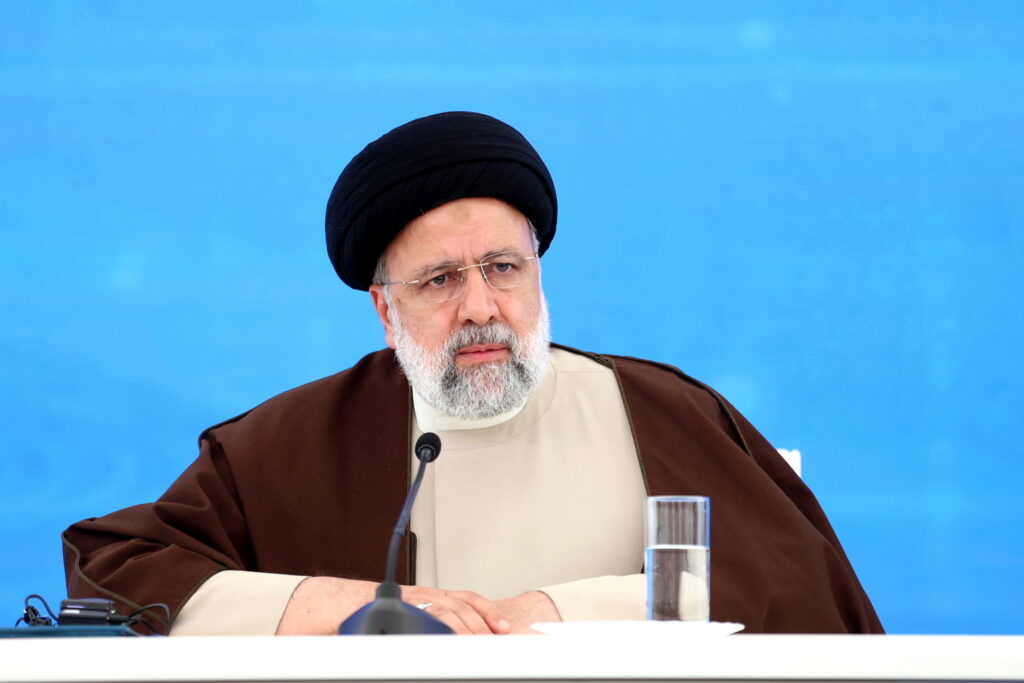Iranian President Ebrahim Raisi is reported to be dead after rescue workers reached the site of where a helicopter carrying him and his entourage crashed in the country’s northwest, according to official Iranian state media.
Reports first emerged Sunday that a helicopter transporting Raisi, Iranian Foreign Minister Hossein Amir-Abdollahian, Tabriz Friday prayers leader Ayatollah Mohammad Ali Ale-Hashem, East Azerbaijan Governor General Malek Rahmati and an unspecified number of guards and crewmembers had crashed in Iran’s East Azerbaijan province following a trip to the border with the neighboring country of Azerbaijan. The area was covered by heavy fog at the time of the crash, and the weather conditions hampered the massive search and rescue effort that ensued.
A breakthrough emerged early Monday, local time, when a drone provided by Turkey identified a thermal signal believed to be the wrecked aircraft. Iranian state media channels, including Mehr News Agency, then reported that rescue workers had approached the site of the crash, only to find no evidence of survivors and Raisi’s death was confirmed shortly afterward.
Newsweek has reached out to the Iranian Mission to the United Nations and the International Federation of Red Cross and Red Crescent Societies for comment.
Iranian President Ebrahim Raisi Meets with Azerbaijani President Ilham Aliyev as they inaugurate the Qiz Qalasi Dam, constructed on the Aras River on the joint borders between Iran and Azerbaijan, after which his helicopter reportedly…
Office of the President of the Islamic Republic of Iran/Getty Images
In the wake of Raisi’s death, Iranian Vice President Muhammad Mukhbar would be set to assume acting presidential duties with the approval of Supreme Leader Ayatollah Ali Khamenei as per Article 131 of the Iranian Constitution. New elections would then be held within 50 days.
Raisi, a former judiciary chief, was elected president in June 2021 and was poised to stand for reelection for a second four-year term next year. His victory marked a major win for Iran’s conservative elite that have increasingly consolidated power in recent years, enhancing the influence of Khamenei and the Islamic Revolutionary Guard Corps (IRGC).
Raisi, who was 63 years old, was also seen as a potential successor to Khamenei, who is 85 and only the second to assume the position of supreme leader after the death of Islamic Republic founder Supreme Leader Ruhollah Khomeini in 1989, when Khamenei was serving as president. The appointment of the supreme leader is conducted by the 88-member Assembly for Experts, elections for which were last held in March alongside the country’s parliamentary elections.
The Iranian president’s death comes at a turbulent time for the region as Iran has emerged as a leading player in the broader crisis gripping the Middle East around the ongoing war between Israel and the Palestinian Hamas movement in the Gaza Strip. Iran is a supporter of Hamas and an informal coalition of mostly non-state actors known as the “Axis of Resistance,” which has mounted attacks against Israel from Lebanon, Iraq, Syria and Yemen since the war in Gaza began with a Hamas-led surprise attack against Israel on October 7, 2023.
Iran and Israel, who have long engaged in shadowy clashes across the region, also came to direct blows last month. After Israel conducted deadly airstrikes on an Iranian consular building in Damascus, Iran and its allies conducted a massive missile and drone barrage against Israel and Israel reportedly conducted a strike on an air defense site within Iran.
Heightened tensions have also led to a notable shift in rhetoric among senior officials and influential figures in Iran toward the possible development of nuclear weapons. Israeli and U.S. officials have warned that they would not allow Iran to obtain such a capability.
While Iran continues to deny it seeks to build a nuclear bomb, Raisi oversaw an expansion of Iranian nuclear activities after the U.S. withdrew from a multilateral nuclear deal with Tehran and began to impose new sanctions against the Islamic Republic. Relations between Tehran and Washington, which have not had official diplomatic ties since the 1979 Islamic Revolution that toppled a U.S.-backed monarchy, continued to deteriorate.
But Raisi had made an effort to improve ties with a number of regional countries, including Saudi Arabia, which re-established relations with Iran last year in a deal brokered by China. Iran also became a full member of two multilateral blocs backed by China and Russia, BRICS and the Shanghai Cooperation Organization, and has continued to build closer cooperation with Beijing and Moscow as Western ties unraveled.
At home, Raisi’s tenure also saw some outbreaks of domestic unrest, including from a series of nationwide protests that spawned in September 2022 after the death of a young woman while in police custody for not adhering to the country’s mandatory headscarf laws for women. Insurgent organizations have struck from within the country as well, with the Islamic State militant group (ISIS) claiming the deadliest attack in the 45-year history of the Islamic Republic in January as it sought to achieve a global resurgence.
In an address delivered as the search and rescue effort for Raisi and his entourage was underway on Sunday, Khamenei stated that “the nation doesn’t need to be worried or anxious as the administration of the country will not be disrupted at all.”
Uncommon Knowledge
Newsweek is committed to challenging conventional wisdom and finding connections in the search for common ground.
Newsweek is committed to challenging conventional wisdom and finding connections in the search for common ground.
>>> Read full article>>>
Copyright for syndicated content belongs to the linked Source : Newsweek – https://www.newsweek.com/iran-president-raisi-presumed-dead-crash-after-state-media-reports-1902328
